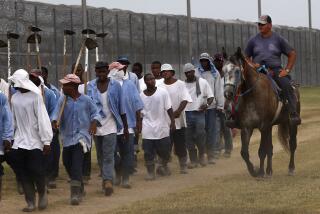To Improve Prison Conditions, We Must First Improve Slums
Last week, watching news from the prison takeover in West Virginia, our attention again was drawn to the problems that breed violence in our nation’s prisons. Overcrowding, idleness and despair are contributing factors, but the crisis cannot be understood adequately without knowledge of the place of prisons in society. And for this we need a historical perspective.
In attempting to explain the deplorable conditions in English prisons, George Bernard Shaw wrote in 1920 that the living conditions of the poor were “so wretched that it would be impossible to conduct a prison humanely without making the lot of the criminal more eligible (desirable) than that of many free citizens. If the prison does not underbid the slum in human misery, the slum will empty and the prison will fill.”
Shaw was merely restating the principle of “less eligibility,” which was first formulated in the 17th Century. In its basic form, the principle maintains that the conditions in prison must always be worse than the standard of living of the poorest members of society. Otherwise people would commit crimes in order to get into prison.
This principle of “less eligibility” still guides our thinking about punishment and our approach to the conditions of confinement. As such, it can help us understand the recent riot at the Oklahoma State Prison, where inmates allege that prison administrators have evidenced a deliberate indifference to the physical and psychological needs of inmates: that inmates are forced to wear degrading striped uniforms, eat rancid food and remain idle all day. The lack of jobs at the prison has left most inmates with no way of earning spending money or “good time” credit. These conditions, it is charged, violate a prisoner’s constitutional right to protection against cruel and unusual punishment.
In West Virginia the rioting inmates complained that their cells were unheated in winter and suffocatingly hot in summer, that they seldom had hot meals and that they were denied such basics as the “right” to wear a beard or mustache.
To those who believe that life in prison must always be worse than life on the outside, these conditions seem just about right. But to much of the public the conditions at these and other prisons must be shocking and unacceptable.
Nevertheless, prison administrators are really not to blame, for they are in a no-win situation. If prisons provide a modest but comfortable standard of living--with adequate food, shelter and health care--if they provide adequate recreational and educational facilities as well as vocational training--things that most of the poor do not have--they will be accused of coddling criminals. And if they do not have a credible deterrent to misbehavior in the prison, such as solitary confinement or short-term withdrawal of food, how can they hope to manage the inmate population?
All of this is not an excuse for the conditions that exist at our prisons; there are no excuses--but there are explanations. And the principle of “less eligibility” is an explanation. It helps us understand whyall efforts to reform the punishment of criminals are limited by the living conditions of the lowest social class. It explains why reform efforts, however humanitarian and well-meaning, can never go beyond this restriction.
The only way to improve conditions in prison is to improve conditions in the slums. There is no other way.
More to Read
Sign up for Essential California
The most important California stories and recommendations in your inbox every morning.
You may occasionally receive promotional content from the Los Angeles Times.










